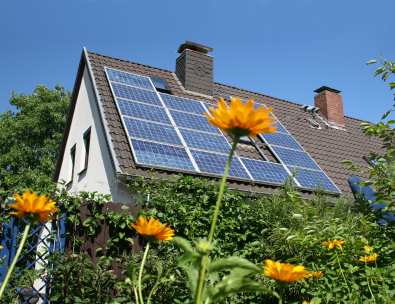Last week the UK Government announced the winners (and losers) in the UK’s first Green Energy CfD (Contracts for Difference) auction. This will be remembered as a turning point in green energy policy, the landmark beginning-of-the-end of indirect subsidies. In total, around £4bn has been awarded to 27 green energy projects (compared to £16bn spent in the old indirect subsidy schemes last year). It is being presented as a win for the consumer and the taxpayer by the coalition government, a fudge by critics and a failure by the UK solar power industry. So which is it? The answer is all three, and none because everyone seems to have forgotten about the real problem which is carbon emissions.
The backstory explains the current situation without getting bogged down in the complex numbers of guaranteed electricity prices, the overlap between the new system and the Renewables Obligation (RO) scheme, calls for subsidy clawbacks from organisations like Renewable Energy Foundation and so on. It’s easy for the big picture of what is happening in the UK green energy market to quickly dissolve into arguments over facts and figures, when the reality of the situation is very simple: The current UK green energy scene isn’t a market, it’s a mess. The reason it’s a mess is because the mix of energies within it – onshore wind, offshore wind, solar, landfill gas recovery, bio-digestion and hydro power – has been insulated from market forces by feed-in-tariffs, investor tax-breaks and market control mechanisms like Ofgem’s ROC certification scheme.
The the growth of UK solar, for example. It has been driven by the double dip of tax relief for investors and ROC obligations for UK energy suppliers offering high returns for investors. The double dip tax break/subsidy regime made solar energy investments very attractive for investment companies, which raised hundreds of millions from private investors to drive rapid solar industry growth. In the new CfD auction regime the solar industry is facing a crisis: only 5 solar contracts won in the CfD auction compared to 15 onshore wind contracts and 2 offshore. Why? Because the base cost of solar electricity in the UK works out higher than wind. The government says a simple market force at work. But it’s not really that simple.
Solar power, in theory at least, is reaching a tipping point in terms of costs that means with continued subsidy support it would have become competitive with fossil fuel energy generation on a MW for MW basis. Solar power is also a lot more popular than wind because it has a lower impact on landscape (panels are less intrusive than turbines) and also can be deployed on rooftops (a market that is developing slowly in the UK and might slow down even more under the new CfD regime). However the argument is complicated by the electricity grid demand. It needs to supply a base load of power at times when the sun isn’t shining and solar power isn’t delivering optimal results, which is why solar in the UK is struggling to replace fossil fuel unlike sunny locations like Chile’s South Atacama Desert, where solar is a viable alternative to fossils.
That’s not to say UK wind is automatically better. The technology of wind has become a lot cheaper in recent years, which proponents claim is the reason why it won so many contracts in the CfD auction. However UK wind is also unpredictable and doesn’t feed the grid more reliably than UK solar, so it doesn’t automatically reduce our reliance on fossil energy either.
The upshot isn’t a win, fudge or failure. It’s a lack of focus on the big issue which remains reducing carbon emissions from electricity generation. The elephant in the room is fossil fuel, and the fall out from the CfD auction is most likely going to be more CO2e emissions rather than less. The mix of renewables that help reduce CO2e isn’t the point, the point is a policy failure of reducing subsidies without replacing them with an incentive to reduce emissions. Ending subsidies and introducing free market mechanisms might give the consumer better value for money, but it’s putting the cart before the horse. A smarter energy policy (and the signs are some energy economists are already suggesting this) is to tax carbon emissions and let the market adjust to fighting climate change with renewables, which is of course, why the industry exists in the first place.
